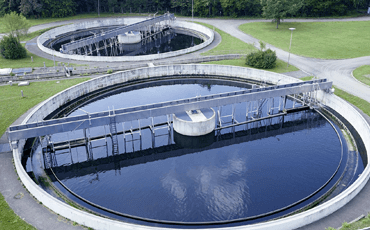With the rise in water pollution and water contamination, water-related issues pose an enormous threat to our existence and our day-to-day life. These issues have led to the need for water purification. The process of eliminating unwanted chemicals, biological pollutants, suspended particles, and gases from contaminated water are known as water purification.
A water purification plant and an industrial filter are two machines that are used for water purification. These machines aim to eliminate undesirable elements from the water and make it safe to consume and suitable for precise use in industries or medical applications. There are several methods that these machines make use of while removing impurities such as fine particles, microorganisms, and certain dissolved inorganic & organic compounds.
The use of water purifier plants lowers the risk of hazardous illnesses such as cancer. When we consume water, it eliminates chlorine and germs that are harmful to our health. As a result, using these water purification plants guarantees that we have germ-free water, which will typically prevent our bodies from diseases that may harm our health. The Water Purifier Plants make use of the pretreatment processes for purification of water, which typically include the following steps:
●Storage – Surface water can be kept in reservoirs for days, weeks, or even months to benefit from the natural purifying process. This is especially essential if slow sand filters are used for treatment. Storage reservoirs also offer some protection against short times of drought and allow for the maintenance of water supply during temporary pollution issues in the source river.
●Screening – Screens are utilized to filter big material from the remaining water purification process and equipment. This is usually the initial stage in water purification plants, particularly those that handle surface water.
●Preconditioning – Water is treated in this phase based on its initial properties. If the entering water is acidic, lime is usually added to increase the pH. Hardness-rich water is commonly treated with sodium carbonate to precipitate calcium carbonate. This is the most common method to turn hard water into soft water.
●Flocculation and Coagulation – This pretreatment step aims to decrease turbidity or colour from incoming water. Chemicals are commonly used to promote coagulation or the production of bigger particles. These particles grow in size when they adhere to one another and are eliminated in a flocculation basin using a simple mechanical technique.
●Sedimentation – The water departing flocculation basins is filtered before going through a sedimentation basin. Water is generally held in sedimentation basins for at least four hours to allow particles to settle.
As the name suggests, a drinking water plant is a water purification plant that specifically aims to provide water that is suitable for human consumption. Industries that provide drinking water use with these types of water purification plants.

A bottling water plant is a type of water purification plant in which the purified water which comes out of the plant is automatically filled into bottles. Most of the businesses that provide bottled drinking water use with these types of water plants.
Industrial establishments and small business organizations can generate a wide range of pollutants in their wastewater streams. Industrial filters are an important part of an industrial or commercial processed water or tertiary wastewater treatment system application.
In industrial applications, industrial water filters are used to remove pollutants from water sources. These filters function by using holes that are tiny enough to enable water to pass through. There are many benefits of using industrial filters. Mentioned below are a few of the benefits of using these filters.
●Lowering in the number of Suspended solids – Most industrial water filtration systems are designed to lower the concentration of suspended solid particles and turbidity in a source water stream. Some sectors, such as food/beverage, pulp/paper, textiles, oil, and gas create large quantities of suspended particles that no one treatment technology can handle. Filtration facilitates this.
●Decrease in the number of other contaminants – Various types of filtration systems can also remove pollutants such as trace metals, ammonia, volatile chemical compounds, iron, manganese, and other contaminants. These filtration systems are capable of reducing these specific pollutants that allow downstream polishing water treatment systems to operate more efficiently.
●Improved treatment efficiency – Filtration units, when used in conjunction with other treatment systems, can assist in increasing overall treatment efficiency. This increased efficiency can be attributed to either pre-treatment or polishing.
●Less equipment upkeep – When operating at optimum efficiency, industrial water filtration systems usually offer decreased equipment maintenance of downstream treatment operations. They are often intended to function in this manner for this precise purpose.
Final words
Both water purification plants and industrial filters can help in reducing water pollution to large extent. Their use in industrial and domestic purposes has already helped in reducing the adverse effects of contamination on water.
Get in touch with us for water purification plant installation.
 Request a Quote
Request a Quote

